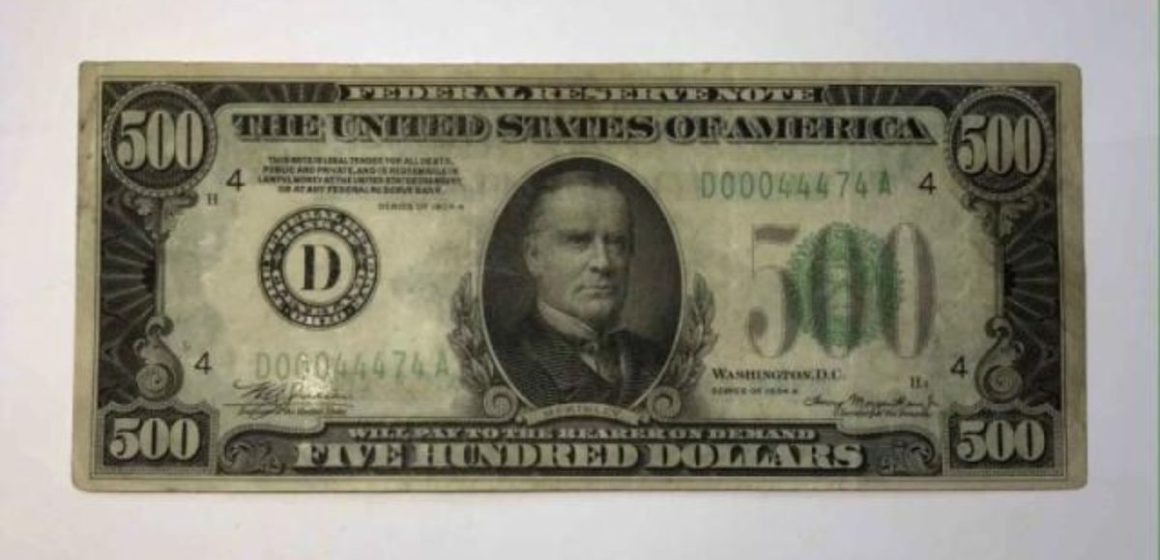A historical piece of American currency, a $500 banknote from the 1930s, is set to make waves in the collectibles market as it goes under the hammer at Hansons Auctioneers in Derbyshire, UK, on June 26. This ultra-rare bill is part of a larger collection of U.S. banknotes discovered in Wales and is expected to attract significant attention from collectors and history enthusiasts alike.
The Historical Significance of the $500 Bill
The $500 banknote, printed in 1934, holds a prominent place in American monetary history. During its time in circulation, it was a symbol of significant financial power.
William Hayward, a coin and banknote valuer at Hansons Auctioneers, noted that possessing such a large sum during the 1930s was uncommon. It was not a bill one casually carried in a wallet; instead, it was reserved for substantial transactions.
Large-denomination notes such as the $500, $1,000, $5,000, and $10,000 bills once played a key role in commerce, particularly for banking and institutional purposes. However, the $500 bill stood out for its scarcity, even during its years of circulation. This makes it a fascinating artifact of economic history and a rare find in today’s market.
Why is This Banknote So Rare?
Several factors contribute to the allure and rarity of this particular $500 note:
1. Historical Context: Printed during the height of the Great Depression, the $500 note represented a substantial amount of money. To put it in perspective, most Americans at the time would never encounter such a denomination, as the average annual income in 1934 was far less than $2,000.

2. Unredeemed Status: This specific banknote has not been redeemed, meaning it is still considered legal tender. Its face value of $500, when adjusted for inflation, is equivalent to approximately $11,619 today. Its unredeemed status enhances its appeal to collectors, as many high-denomination bills were redeemed and destroyed over time.
3. Discontinuation: The U.S. government discontinued the issuance of large-denomination bills, including the $500 note, in 1969 as part of efforts to combat money laundering. The Bureau of Engraving and Printing ceased production of these bills in 1945, further limiting their availability.
4. Exclusive Use: High-denomination bills like this one were primarily used for significant transactions, such as real estate deals or interbank exchanges. They were not part of everyday currency, making them even rarer to find today.
Auction Details
The $500 banknote is expected to fetch a substantial sum when it is auctioned at Hansons Auctioneers. The initial guide price is set between £800 and £1,000 (approximately $1,000 to $1,260). However, experts believe it could sell for much more due to its rarity, historical significance, and pristine condition.
The auction, scheduled for June 26, has already generated excitement among currency collectors and history enthusiasts. The opportunity to own such a unique piece of American history is expected to spark competitive bidding, with collectors eager to secure this prized artifact.
A Piece of History
This $500 bill represents more than just its monetary value—it is a tangible connection to a bygone era of American finance. Its rarity, unredeemed status, and historical context make it a centerpiece for any serious collector of U.S. currency.
As the auction date approaches, the spotlight remains on this exceptional banknote, a relic that serves as a testament to the evolution of currency and commerce. Collectors and enthusiasts alike will be watching closely as this piece of history finds its new home.



Leave a Reply